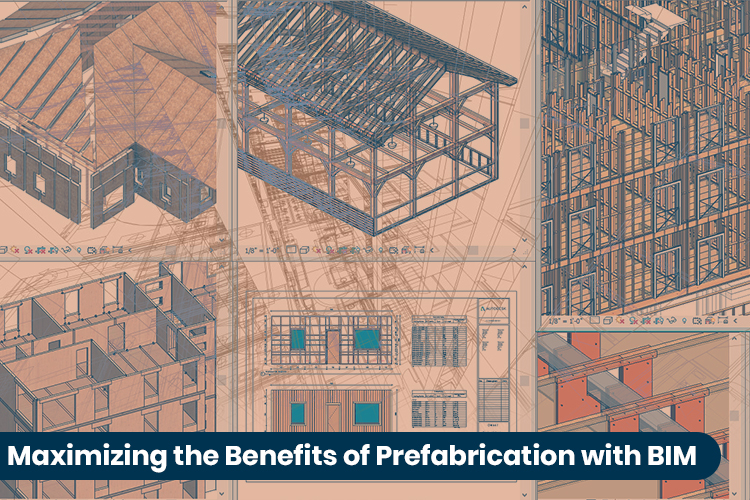Maximizing the benefits of Prefabrication with BIM

Prefabrication means constructing components of a building in a warehouse or in an offsite location which are then transported to the site and assembled together. Prefabrication has led to cost reduction, decrease in hazard reduction cases, increased safety, and reduction in re-work. It also increases the hygiene of the site and the overall quality of the material.
Even though prefabrication boosts productivity it is essential to note that if not executed properly, it can do more damage than good. These benefits can be combined with the modern technology utilized in the construction field i.e. Building Information Modeling (BIM). It is here that the Revit Modelling Services can be utilized to eliminate the potential pitfalls of the project.
Below let us understand the main benefits of Prefabrication and how BIM can be useful in maximizing its gains.
Advantages of Prefabrication:
1. Cost-Effective:
There are numerous factors that shoot up the traditional construction cost and they are to an extent beyond human control.
These factors may be unruly weather, shorter daylight hours, etc. Any change in one of these trickles down to change in material and labor costs. For Instance: harsh weather means certain materials may need to be replaced or it may need to be stored for longer periods both of which translates to higher costs. Prefabrication on the other hand is less labor-intensive and takes place in a weather controlled factory. It can also be reused and certain pre-requisite materials needed for construction can be disassembled and relocated saving time, materials, and ultimately money.
2. Quality Control:
Sub-Assemblies are conducted in a controlled environment so rains, snow, or wind makes no impact on the material. This obviously enhances the quality of the materials used. A lot of materials that are used in Prefabrication like raw wood, aluminum, iron, fiberglass, etc. are susceptible to weather conditions. It is by constructing them in factory conditions that we can maintain the quality.
The tools available in a factory offer additional quality assurance as compared to those on-site. Moreover, construction site-building is dependent on the varying skill levels of independent contractors. In Prefabrication, each sub-assembly is conducted by a skilled crew in a controlled environment. Here, there are no additional disruptions like noise, pollution, etc. which would increase product quality and efficiency.
3. Green Construction:
One of the biggest advantage of prefabrication is that it is ecological and energy efficient. Firstly, it controls production conditions and hence reduces waste. Then the properties of unused materials can in a factory condition be identified and can be recycled. In a traditional site, these materials would be directly sent to a landfill. The process also reduces the consumption of water, energy and petrol which is utilized on site, this reduces pollution and the carbon footprint. Many countries across the globe like UK, US, Canada provide tax incentives to AEC firms to go green, which can with prefabrication can be utilized.
Maximizing Benefits with BIM:
Prefabrication today is most utilized by the disciplines of Structural engineering and MEP engineering. They have been able to effectively capitalize on the gains of prefabrication and use it to enhance their production and increase their margins. By implementing BIM into the prefabrication process, engineers are managing to widen the scope of this field.
Prefabrication needs to be done with skill and precision or it can have adverse consequences. It holds especially true when prefabrication is used in the construction of mobile modular buildings. These prefabricated modular buildings are built in an offsite location and then transported to the site. They are typically erected on a structural steel frame that carries the load of the whole building. It is here important that the structure has the strength to hold the building. Structural BIM Services here can be used to virtually construct the building and determine how the prefabricated building will hold in the real environment.
Also without BIM, there is an arduous calculation to create pieces and parts that fit together as intended. With virtual 3D Modelling, architects and engineers can ensure that the parameters of even a tiny component of the MEP System are exact. It detects clash, corrects errors, allows for better scheduling and simulation can even allow for better viewing of assembled parts. It can thus allow for better precision and reduce the overall time taken.
Conclusion:
Prefabrication is a healthy and sustainable solution for the construction industry. It allows AEC Industries to have bigger margins and produce better quality products. Incorporating BIM into the process will only make the prefabrication process more successful and beneficial.